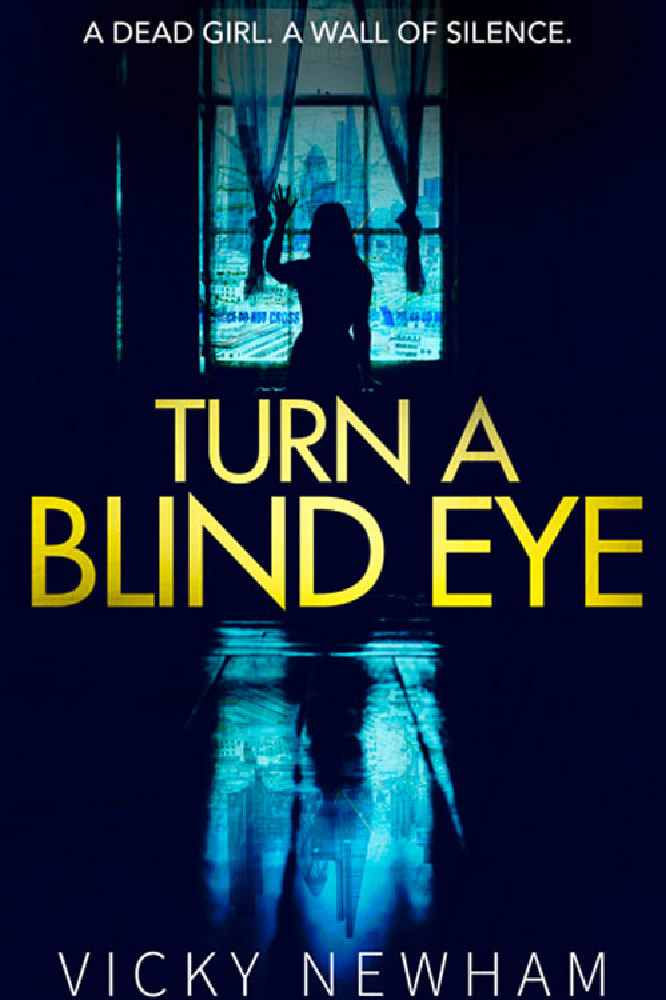Aspiring novelists are often advised to write about ‘what they know’ or ‘what they want to read’. I write mainly to explore things which I feel strongly about or am interested in. My debut novel, Turn a Blind Eye, is the first in a new police procedural series set in East London. The characters and plot were inspired by the people who live there and the place. In other words: psycho-geography.

Turn a Blind Eye
In 2002, I took up a teaching post at a school in Stepney and moved to East Ham shortly after that. Many of my students and colleagues were Bangladeshi, Somali, Pakistani and Afro-Caribbean. While aspects of their lives mirrored my own, I saw that some cultural norms and challenges did not. I realised that if I wanted to relate to my students, neighbours and colleagues to the best of my ability, I needed to get to know them and understand their lives and cultures. It was this experience which inspired the characters and story in my novel. In addition, I was teaching A-level Psychology and the curriculum included a module on cultural differences in relationships. I listened in class, form time and PSHE to how my students viewed the role of love and choice, and how they felt that many people in the West look down on arranged marriages. It might sound dramatic to say that this was life-changing for me, but it was. It really bothered me. So did my observation that the learning of some of my students was sometimes hindered by factors at home, language barriers and prejudice.
Working in Stepney during this time, I also became fascinated by the history of Tower Hamlets. The docks have been linked with immigration and trade for centuries, and many changes have been cyclical. In Brick Lane, for example, numerous communities have settled and moved on: the Flemish, the Protestant Huguenots, the Jews and Bangladeshis, to name but a few. In my novel, I chose to make my protagonist a female Bangladeshi. Maya Rahman came to the UK with her family as a four-year-old in 1982. She’s now a detective inspector in the Met, a high-ranking officer. This gives me the chance to explore the challenges she faces in her job and community: racism, sexism and mixed feelings about her education and cultural identity. But it’s her background, her compassion and determination, which help Maya to solve the crimes she’s investigating.
I can’t say too much without spoiling the plot but I also wanted to explore how some minority ethnic youngsters feel about the world, so I deliberately included a Psychology teacher as a character and used some classroom scenes. In the book, Steve is a new teacher at the school. He discovers the first murder. It’s an intense experience for him because he is teaching about cultural differences (like I was) and his pupils are asking about the deaths. Just as plots in Scandi-Noir often stem from society and the landscape, I’ve used the East London setting to inspire the story in Turn a Blind Eye. I’ve altered events from real life, fictionalised them and incorporated the puzzle element that you’d expect from traditional crime fiction. So, the key questions in the book are who the killer is, why the killer is linking the murders with Buddhist precepts, and a more philosophical question about whether all cultural differences are reconcilable.
The book opens with Maya back in Sylhet for the first time in thirty years for her brother’s funeral. As soon as she arrives home in Mile End, she’s plunged into a high-profile murder investigation when the headteacher of her old secondary school is found strangled. Beside the body is a message, saying ‘I shall abstain from taking the ungiven’. What I’m hoping is that the book gives readers a compelling mystery along with a glimpse of what it’s like to live in that part of East London.

